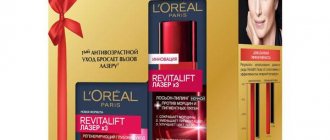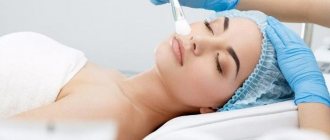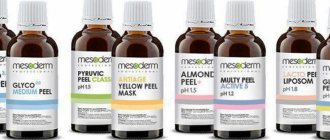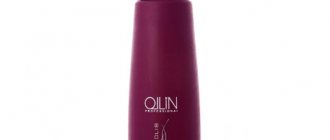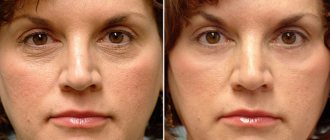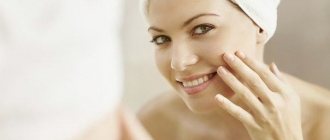- For those with rosacea, the use of scrubs, warming masks, and peels with a high concentration of acids is contraindicated.
- To protect against hypothermia, apply nourishing cream 30 minutes before a walk in frosty and windy weather.
- Protect your skin from sun exposure with a cream with SPF 35 or higher. The filter will protect against burns and drying out.
- You will have to stop loving baths, saunas, and contrast procedures. Temperature changes and overheating are contraindicated for couperose skin.
- In autumn and spring, special vitamin complexes for skin health will help. They compensate for the lack of vitamins C, PP, K in the body. Strengthens blood vessels from the inside. Increases their elasticity and permeability.
- soap;
- products containing alcohol;
- steaming;
- vacuum massage;
- ice;
- contrasting washes;
- scrubs;
- “dry” massage with a brush.
What is harmful with rosacea?
Those with soft rosy cheeks should know which cosmetic procedures should be excluded from their care.
So, for rosacea the following are contraindicated:
There are no peelings on that list. It's not a mistake. Exfoliation of dead epidermal cells is an important stage of care and treatment. Couperose skin also needs deep cleansing and renewal. It is recommended to do the procedure once every 7 or 10 days.
Not all types of peels are equally beneficial. Scrubs and aggressive complexes are not suitable. They are too traumatic for delicate skin. May cause irritation.
How it works
Essentially, this type of peeling is a combination: a dioxide mixture that exfoliates dead epidermal cells, combined with laser heating. Contaminants located in the pores are drawn out by the nanogel. The most delicate and safest laser in comparison with other types of laser is used - neodymium. Its task is to remove dead skin cells while stimulating the production of new ones. Often, the result is noticeable after three to five sessions. If the dermis is too advanced, a course of seven procedures may be required. At the same time, expect that ten or more days should pass before each subsequent one (more precisely, your cosmetologist will tell you). The skin must have time to recover before a new visit.
In combination with mesotherapy, peeling brings noticeable results. But remember that other influences are excluded during this period. Moreover, you should not use it as a preparation for laser polishing.
Basic properties of acid
Lactic acid belongs to the organic group. It is formed during the breakdown of glucose. Since this substance is present in the human body (it participates in the process of carbohydrate metabolism and is one of the components that moisturize the skin), it is completely natural and absolutely safe in terms of allergies. In particular, peeling with lactic acid using Mediderma brand products is in great demand. This composition promotes high-quality cleansing of the skin and allows you to eliminate minor imperfections in its relief.
Who is carbon peeling suitable for?
There are a number of problems for which this procedure is most suitable:
- rosacea, both pronounced and not severe;
- presence of rosacea;
- lumpy and uneven skin surface;
- enlarged and clogged pores;
- acne, comedones;
- acne and post-acne;
- small scars and marks after acne;
- increased sebum secretion;
- patchy pigmentation or freckles;
- dull skin;
- small and shallow wrinkles.
Why do you need peeling?
Peeling is the procedure for removing the top layer of skin. It starts a faster regeneration process. The fact is that with age, the rate of natural skin renewal decreases. More and more dead cells remain on its surface. This leads to dull complexion, the appearance of wrinkles, inflammation and other imperfections. With regular exfoliation, all of these problems can be eliminated or prevented from occurring. Peels are:
- Physical (use abrasive particles, for example, scrubs);
- Chemical (use chemicals, such as acids);
- Hardware (use laser systems or ultrasound).
Contraindications
Carbon cleaning is not suitable in the following cases:
- dermatological diseases are present, especially in the acute phase;
- if you have vitiligo;
- there are inflamed areas;
- there is a violation of the integrity of the skin - scratches, cuts, wounds;
- the patient has a tendency to form keloids and scars;
- allergy to the active substance;
- the presence of infections - viral or fungal;
- increased sensitivity to laser effects;
- if you are breastfeeding or pregnant.
In addition to this list of unconditional restrictions, there are also temporary ones. It is advisable not to carry out carbon laser procedures during periods of active sun - in summer and late spring. The best time is autumn and winter. This is due to the fact that the peeling solution contains a photosensitizing substance, the effect of which is exacerbated by ultraviolet rays.
Which peeling is best for rosacea?
Cosmetologists working with Israeli cosmetics Anna Lotan consider soft peelings with a gentle concentration of fruit acids or alternative softening ingredients to be a good solution. They even recommend peelings from the ALODERM and BARBADOS series to their clients for home care.
Soft peeling
Peeling gel with azulene is created for especially delicate skin. It is useful to combine the use of this peeling with a light massage. It improves blood circulation and promotes easy exfoliation. Dissolves excess sebum, impurities, makeup. Softens epidermal cells. Chamomile and calendula extracts soothe inflammation, heal, and brighten. Olive, jojoba, and macadamia seed oils soften and nourish.
The product should be applied to the face in a thin layer. Perform a light massage using circular movements until you feel warmth. Moisten and continue the massage for a few more minutes. Rinse off with warm water.
Peeling gel with azulene 50 ml
Deep peeling
For deep peeling for rosacea, Scalex peeling gel from the BARBADOS line is suitable. This is a peeling for sensitive skin with rosacea. It refreshes and stimulates blood circulation. Evens out the relief and has a lifting effect. It does not contain fruit acids or abrasive particles. Suitable for very thin dry skin. The oils in the composition soothe and restore lipid balance. Strengthens lymph flow in tissues.
Scalex natural exfoliating peeling gel for delicate skin 40 ml
SKALEX peeling gel is used in conjunction with Aloe gel from the same company. Peeling is applied to the face and neck in a thin layer, then aloe gel is added. A light cosmetic massage is performed.
Peeling contains only natural active substances and preservatives. Plant extracts and oils. Dead Sea water. The risk of injury and allergies is minimal.
Natural Aloe Vera gel 250 ml
Technique of the procedure
There are standard steps that are always followed in the carbon peeling process:
- preparatory stage, which consists of cleansing and disinfecting the face. The skin is prepared by applying lotion to it (without alcohol in the composition). Residues of cosmetics and possible contaminants are removed. Afterwards, a drug is used that eliminates microbes;
- Allergy testing is carried out. A small amount of peeling composition is applied to an area with thin skin - wrist, elbow. If after a certain time the reaction does not occur, the procedure itself begins;
- the face is cleansed of the antimicrobial agent. Dioxide is applied to the surface of the skin. The nanogel with carbon has a dark tint, which then becomes colorless under the influence of a laser. Its task is to relieve inflammation. The substance is left on the skin until the film dries;
- Based on the properties and density of the skin, the laser intensity and temperature are adjusted. The patient is given glasses for protection. All areas of the skin gradually warm up. Particles of the substance applied to the skin explode when evaporated. The most important and responsible stage. The cosmetologist's job is to gently heat the cells to remove dead cells without burning the skin. In case of wrinkles and age spots, the laser temperature is increased. Heating the internal tissues stimulates the smoothing of the skin through the production of hyaluronic acid, which then fills in uneven areas in the epidermis. Warming up lasts about fifteen minutes;
- When the laser treatment is completed, the face is cleared of the mixture. A soothing mask is applied to the skin.
The total duration of the procedure is no more than half an hour.
Unpleasant sensations or burning sensations may occur if the temperature on the device is not set correctly. This effect can also occur if the pulse depth is incorrect. However, a feeling of warmth during the procedure is normal.
Peeling requirements for sensitive skin
We are talking about all types of peeling, not just chemical ones.
- Delicate exfoliating properties;
- Does not damage skin barriers;
- Not thinning the epidermis;
- With moisturizing and restorative effects;
- For acid peels: preference for lactic acid, for problem skin - almond. pH 3.5 – 3.0;
- Enriched composition: hyaluronic acid, additional antioxidants, moisturizing and soothing complexes.
Post-procedure care
For twenty-four hours after the session, you should not wash your face or rub it. The next day, the skin will turn red and begin to peel. This effect will disappear after three to four days.
The gentle effect of carbon makes post-procedure care easy. You will need:
- frequent use of moisturizer to restore water balance;
- Wipe treatment areas with an antiseptic throughout the day;
- avoid thermal exposure;
- use a sunscreen emulsion with an SPF of at least 35 and avoid exposure to the sun - it can cause age spots;
- do not use products containing alcohol;
- Do not use decorative cosmetics for two to three days.
The dermis will recover within 10-14 days.
Features of the method
The main components of yellow peeling compositions are retinoids. These are synthetically created analogues of vitamin A, which have a milder effect on the skin and, unlike acids, do not destroy proteins. The method is a superficial type of facial peeling, but the result obtained is similar to the average one.
After the procedure the following is observed:
- activation of metabolic processes at the cellular level;
- stimulation of the synthesis of the intercellular matrix and epidermal lipids;
- normalization of the production of collagen and elastin fibers;
- slowing down age-related changes in the skin;
- reduction in the number of atypical cells;
- improvement of skin texture and relief;
- lightening pigment spots;
- antioxidant effect;
- rejuvenation.
Possible complications
Negative manifestations after the procedure are very rare, and are often associated with disturbances in the care process. Please remember that there is a risk of:
- suppuration due to infection. This is possible if the surface of the skin is damaged. It is important to treat your face with an antiseptic;
- swelling. Appears when you use a cleanser, alcohol lotions, or regular soap;
- pigmentation in the form of spots. A possible consequence if the procedure was performed on a patient between fourteen and twenty years old. This complication can also occur if you are exposed to sunlight for a long time after the session.
This procedure does not have dangerous, serious consequences, and if you follow the recommendations of a cosmetologist, they are completely excluded.
Cuperosis - symptoms and treatment
Cuperosis is a skin disease that develops due to the fragility of capillary walls and local circulatory disorders. It is accompanied by a violation of skin color, loss of elasticity and the appearance of telangiectasia - spider veins or spider veins [1].
As a rule, rosacea is not an independent disease. This is a symptom that accompanies the underlying disease.
Vascular dilatation and fragility occur for a number of reasons. They can be both internal and external factors.
Internal factors:
- Rosacea is the main cause of rosacea;
- physiological hormonal changes - during adolescence, during pregnancy, menopause or when taking hormonal contraceptives;
- diseases of the ovaries, thyroid and pancreas;
- replacement therapy for endocrine pathology [5];
- cardiovascular diseases (arterial hypertension and atherosclerosis);
- diseases of the digestive system (gastritis, intestinal dysbiosis, liver and pancreas diseases);
- scleroderma and hereditary autoimmune diseases (Sturge-Weber disease, Louis-Bar syndrome, Randu-Osler disease).
In case of hormonal disorders, isolated particles of hormones interact with receptor cells, forming biologically active biological compounds. These compounds affect the walls of blood vessels, reducing their firmness and elasticity, making them brittle.
During pregnancy, serious hormonal changes occur in the body. The vessels may not withstand such a load and expand. Since this restructuring is temporary, the vessels are usually restored within 2-3 months after birth. But due to the development of other diseases (for example, hypertension), vasoconstriction after childbirth may not occur.
With hereditary autoimmune diseases, the amount of filamentous protein, which gives elasticity and elasticity to the vascular walls, decreases and the vessels become brittle. Scleroderma is accompanied by a rejection of connective tissue. This also affects blood vessels.
Rosacea affects the sebaceous glands, hair follicles and capillaries of the facial skin. Due to persistent dilation of blood vessels and a rush of blood, telangiectasias appear.
External factors:
- bad habits (smoking, alcohol abuse);
- unhealthy diet (drinking large amounts of coffee, chocolate, spicy and hot foods);
- temperature changes;
- ultraviolet irradiation.
Smoking affects blood vessels, destroying the balance of lipids in the blood. Lipids are fats that affect human metabolism. Destroyed particles from the lipid balance settle on the vascular walls, clogging their lumen. The heart, with an increased load, pushes blood through the vessels, as a result, different pressures are formed in the vessels with venous and arterial blood, which leads to an expansion of the capillary network.
Excessive alcohol consumption also contributes to the accumulation of fats in the vascular walls, and ethanol dilates the capillaries. It reduces blood pressure by relaxing the vascular walls, thereby losing the elasticity of the vessels and they remain dilated.
People with sensitive and fair skin are most susceptible to developing rosacea, especially under the influence of temperature changes and ultraviolet radiation. Such skin quickly reacts to external factors, which contributes to damage to the walls of blood vessels.



